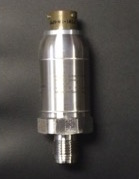
For a leader in industrial flow equipment and services, one specific application was causing significant difficulties for their end user. The harsh environment – high-temperature chlorinated gas for fiber optic production – was causing half of their pressure transmitters to fail. By working with WIKA’s experts in quality instrumentation on a custom pressure sensor solution, the customer overcame their systematic field problem with great success.
The fiber optic cable market could reach almost $6 billion by 2025, driven mostly by the world’s increasing internet use. As global demand grows for faster data transfers and more bandwidth, the demand for fiber optic cables grows as well.
However, this industry faces challenges as well as healthy growth. For one, the manufacturing of fiber optic cables requires using high temperatures and harsh chemicals – elements that can damage standard measuring instrumentation.
Challenge: Standard Pressure Sensor Not Robust Enough
A long-time WIKA customer, a global distributor of flow components and services for ultrahigh purity (UHP) and industrial markets, had a challenge. One of the distributor’s end user, a process equipment manufacturer, has an integrated vapor flow control system for fiber-optic production that requires high-temperature, chlorinated gases. The problem? The standard pressure sensors used to measure the chlorinated gas pressure were unable to withstand the environment’s high temperatures and harsh chemicals. The end user’s pressure sensors in the field began failing at an unacceptable rate of 50%.
Due to WIKA USA’s proven track record and reputation for quality instrumentation, the distributor reached out to us for advice and solutions. The need: A pressure transmitter that could withstand these two challenging environments – accurately and reliably – for this critical application.
Solution: A Customized Pressure Sensor
WIKA USA’s project management (PM) team spent considerable time with the distributor to better understand the need and outline the end user’s application requirements. This team then worked closely with WIKA’s engineering and production teams to define the product specifications.
One thing quickly became clear: The situation required more than an off-the-shelf product from WIKA’s semiconductor line. From there, those teams worked on a custom solution. The customer service team aligned samples for prototypes and First Article Inspection (FAI) with the distributor’s test schedules.
After several evolutions, much feedback, and many hours of retooling the S-20 pressure sensor, WIKA hit upon the perfect solution for the end user’s high-temperature, chlorinated gas environment.

For a customer’s end user, WIKA developed a custom pressure sensor that can withstand high temperatures and a chlorinated gas environment.
Results: Faster Uptimes and Zero Field Failures
After switching to the customized S-20 pressure sensor, the end user reported a 200% increase in system uptime. What’s more, there have been zero field failures for the more than 1,000 pressure transmitters. Based on this successful initial result, the distributor’s end user expects to add around 500 WIKA pressure sensors each year to its growing install base.
In the end, it was WIKA’s partnership and innovation that resulted in an instrumentation solution rugged enough to not only survive, but thrive, in a high-temperature, chlorinated gas environment where other sensors had failed.
“The WIKA product is a ‘slam dunk’ solution,” said an executive from the global distributor. “It works great, is easy to use, and doesn’t fail.”
The WIKA USA Advantage
WIKA has a global reputation for high-quality, cost-effective measurement instrumentation. But more than that, what separates us from the competition is our dedication to value innovation. We listen to our customers, question the status quo, and seek to come up with effective solutions that previously couldn’t be found in the marketplace.
WIKA uses a SMART approach to value innovation:
- Size requirement of the application, i.e., the footprint, to make products that readily fit the available space.
- Materials that provide years of reliable usability and accuracy.
- Accuracy requirements that include non-linearity, hysteresis, non-repeatability, and reproducibility. (Most other instrumentation manufacturers focus only on non-linearity, which is only a fraction of the total accuracy.)
- Responsive to customer needs when developing industry-leading measurement solutions.
- Technologies that are state of the art and place WIKA as a leader in the industry.
When it comes to finding solutions for challenging applications, you can count on WIKA USA’s commitment to quality, exceptional customer service, and dedication to innovation.

